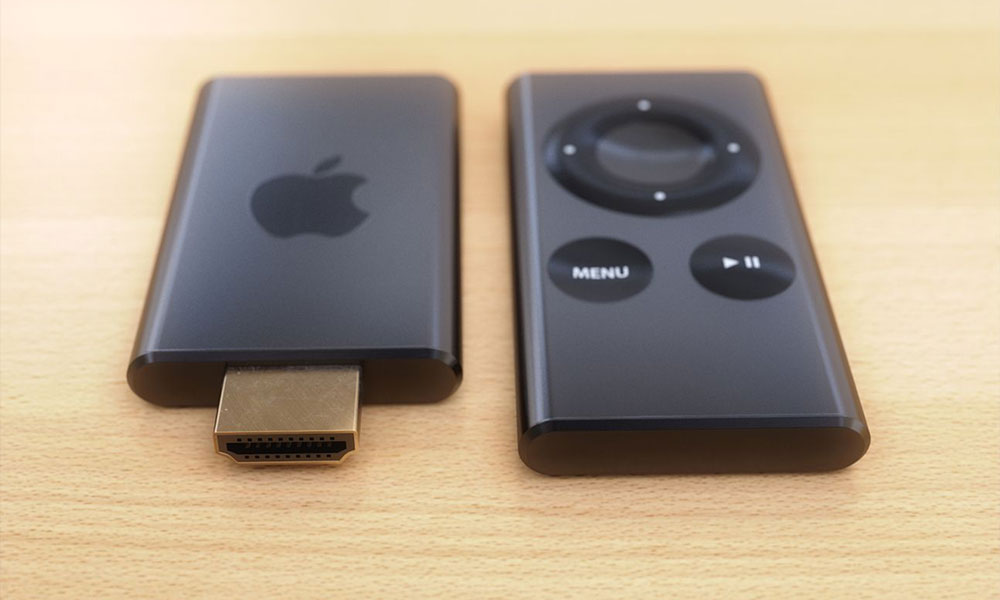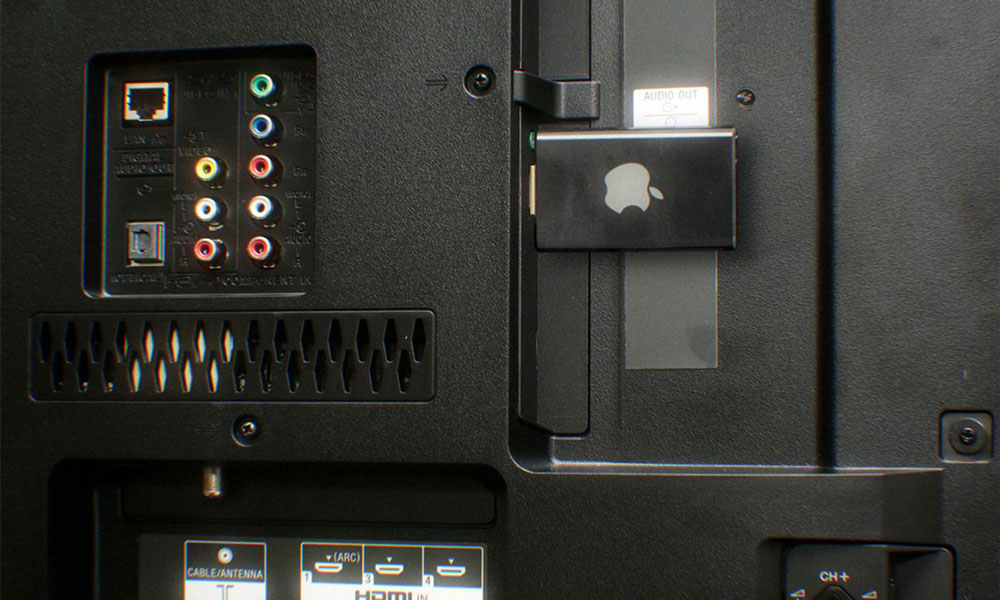Apple Considered Selling a Lower-Cost Apple TV Dongle (But Nixed It for One Reason)
 Credit: Curved
Credit: Curved
Toggle Dark Mode
Compared to its razor-sharp focus on the iPhone, Apple’s ambitions for the living room have always seemed a bit rudderless, with a lineup that’s traditionally consisted of niche and sometimes overpriced devices.
To be fair, the Apple TV began as a “hobby” when it first came on the scene 14 years ago, but it’s not clear the device has ever really evolved beyond that within the walls of Apple, even after two major design changes and the emergence of a more powerful tvOS operating system.
Today, the Apple TV is often criticized as an overpriced device that doesn’t serve much of a purpose, which is a fair assessment in an era when even Apple has made its own streaming services available on smart TVs, game consoles like the PS5/PS4 and Xbox, and even directly competing Roku boxes and Amazon Fire TV sticks.
It’s a sadly ironic twist for a product that was so ahead of the curve 14 years ago. You may find it hard to believe now, but the original Apple TV came out a week before Netflix began its transition from a DVD-by-mail company to becoming a streaming service. To say that Apple dropped the ball here may be an understatement.
Then there’s the original HomePod, which was a fantastic smart speaker, but targeted at the tiny Venn diagram intersection between the most hardcore Apple fans and audiophiles. Those who were the target market for the HomePod generally loved it, but that was a pretty small group. The rest of the marketplace quite understandably failed to see the appeal.
Now, a new report from The Information is offering us a bit of insight into Apple’s thinking when it comes to its living room strategy, particularly its penchant for building “premium” devices.
Avoiding ‘Cheap, Low-Margin Devices’
Specifically, The Information cites an attempt by Apple’s VP of Home and Audio Product Marketing, Tim Twerdahl, to pitch a lower-cost streaming dongle that could be sold alongside the Apple TV — a strategy similar to what Amazon and Roku have both done with their streaming hardware.
According to Twerdahl, the dongle, which was being proposed to complement Apple TV+, would have made “it much more affordable for people to access Apple’s video-streaming service.”
However, the idea was nixed by Apple’s senior marketing executives Greg Joswiak and Phil Schiller, who at the time were serving as VP and Senior VP of Worldwide Marketing, respectively.
A low-cost dongle, they feared, would “tarnish [Apple’s] reputation for building premium products.”
But two longtime Apple marketing executives, Greg Joswiak and Phil Schiller, overruled Twerdahl, said the person familiar with the discussions. They didn’t want Apple getting into the business of making cheap, low-margin devices, and they were concerned that putting Apple’s brand on them would tarnish its reputation for building premium products.
The Information
On the upside, though, it was apparently this desire to avoid an inexpensive Apple TV dongle that led to Apple’s decision to open up its walled garden and bring its TV app to smart TVs, game consoles, and competing set-top boxes.
In the end, Apple decided it was comfortable developing an app for Apple TV+ that worked on hardware products from Samsung, Roku, Amazon and others, even if they were relatively inexpensive.
The Information
The idea, sources suggest, is that Apple would rather leave the “cheap, low-margin” devices to competing brands, likely since there wasn’t much money to be made there anyway, and continue to focus on providing a premium hardware experience with the physical Apple TV.
It’s fair to say that this ultimately turned out to be the right decision, even if Apple made it for the wrong reasons. No matter how affordable this dongle could have been, it would have felt like the height of hubris — even by Apple’s usual standards — to seriously expect people to buy a piece of Apple hardware just to enjoy its streaming services.
The result is that even though some still criticize the Apple TV hardware for being overpriced, it’s far from a necessary purchase for anybody who just wants to watch TV. There are still many great reasons to buy an Apple TV, but simply watching Netflix, Disney, or even Apple TV+ isn’t one of them.
That said, these discussions between Twerdahl, Joswiak, and Schiller likely occurred over three years ago, since they obviously predate Apple’s decision to bring TV manufacturers into the fold, which would have happened sometime in late 2018.
Since then, Apple has shown a glimmer of hope that it might actually be starting to understand that not everybody needs a premium device in their living room. Last fall’s launch of the HomePod mini was a huge step in that direction, an affordable $99 smart speaker that delivered on the most important benefits of its larger and more expensive HomePod — and more.
This was followed by Apple’s decision to discontinue the HomePod, stating that it would be focusing all of its efforts on the HomePod mini instead. This tacit admission that the original HomePod had turned out to be a “failure” may also represent a turning point in Apple’s attitude toward the living room.
While there are still some things the full-sized HomePod can do better, including awesome new Home Theatre Audio features with the latest Apple TV, most people remain satisfied with the much more affordable HomePod mini, and by all reports these are selling like hotcakes. Hopefully, Apple learns from this experience and adjusts its future living room hardware ambitions accordingly.








